Preventative Bovine Care: How Cow Magnets Safeguard Digestive Health
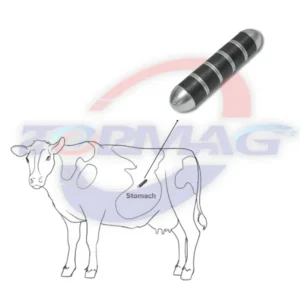
Why do cows need to “eat” magnets? The answer lies from their unique digestive system and the pasture environment. Image a cow’s stomach as a giant “fermentation factory” that breaks down tough grass through repeated rumination. However, pastures often contain metal debris like nails or iron filings, which cows can accidentally ingest along with grass, especially into the rumen. During rumination, these sharp metals act like “rogue blades,” potentially piercing or damaging the stomach lining, causing ulcers, infections, or even life-threatening conditions.
Farmers use cow magnets, which are capsule-shaped devices with magnetic properties. Swallowed by the cow, the magnet attracts and holds metal debris like nails or filings, preventing them from colliding with the stomach lining during rumination and effectively reducing the risk of ulcers. This method is generally accepted in modern automated cattle breeding and helps to maintain cow health and at the same time control the economic loss caused by the disease.
Types of Cow Magnets
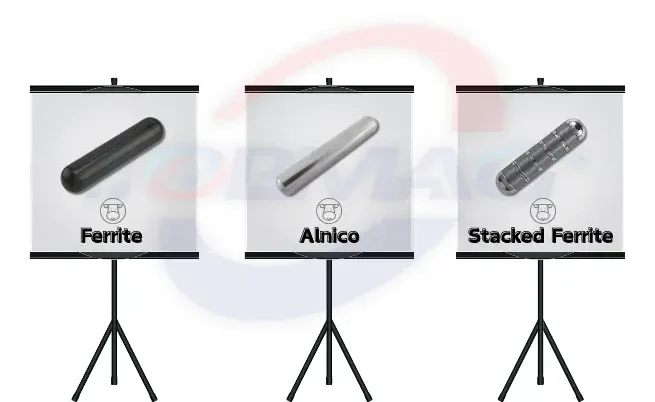
The material and design of cow magnets directly impact their effectiveness in attracting metal debris. Below are three common types:
- Ferrite: The most traditional cow magnet material, with moderate magnetism and larger size but limited attraction capacity, often requires multiple segments in series to enhance performance.
- Alnico: This material smaller than ferrite yet with stronger magnetism, efficiently attracting metal debris.
- Stacked Ferrite: A set of multiple ferrite rings joined not only refers to the increased attraction surface area but is usually used in the cow’s stomach for the long term for sustained protection.
The materials selected are the result of the science-practice partnership. Getting the right magnetic power and keeping the weight as low as possible to make it easier to digest is the most pivotal.
How to Administer Cow Magnets
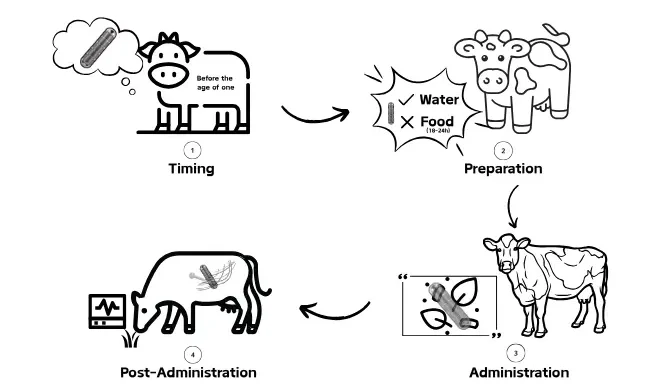
- Timing: Farmers typically administer cow magnets when calves are tagged, ideally before one year of age, to maximize long-term protection.
- Preparation: Before feeding, cows should fast for 18–24 hours, with access only to water. This empties the stomach, allowing the magnet to move smoothly and settle in the correct position.
- Administration: Cow magnets are usually mixed with feed to encourage swallowing. Once ingested, the magnet sinks into the reticulum or rumen, where it begins trapping metal debris.
- Post-Administration: After feeding, briefly monitor the cow to confirm no discomfort or complications.
How are cow magnets removed?
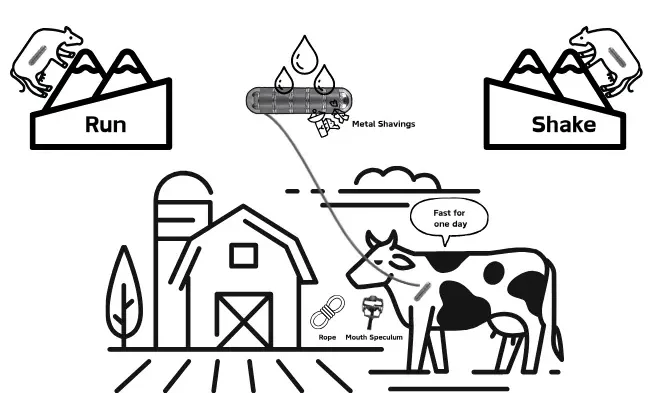
- Tool Preparation: Utilize a Dual Cow Magnet equipped with a rope and a mouth speculum. Ensure the rope is sturdy.
- Cow Preparation: Select a cow in good physical condition and have it fast for one day, providing only water. This reduces food residue in the stomach, facilitating magnet movement.
- Restraint and Procedure: Secure the cow in a standing position, with an assistant using nose pliers to gently pull the cow’s nose, tilting its head slightly upward. Attach the mouth speculum to keep the cow’s mouth moderately open. The operator inserts the magnetic head of the retriever through the speculum into the cow’s throat, guiding it to be swallowed until it reaches the rumen.
- Metal Attraction: Once the magnet is in the rumen, continue feeding the rope. Then, lead the cow to walk, run, and make sharp turns on a steep slope for 10–20 minutes. This mimics “shaking a magnetic sieve,” allowing the magnet to move thoroughly within the stomach and attract nails and other debris.
- Slow Retrieval: Allow the cow to rest, keeping its body upright, and slowly pull out the magnet. Pay attention to resistance at the cardia, using a “release-pull” rhythm until the magnet is smoothly extracted.
- Cleaning and Inspection: After removal, rinse the magnet with water and inspect the adsorbed metal debris. If the magnet is covered with nails, the procedure may need to be repeated to ensure all metal is thoroughly removed from the stomach.
Summary
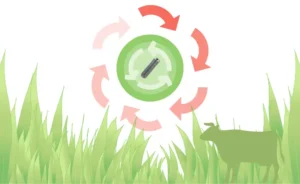

I'm dedicated to popular science writing about magnets. My articles mainly focus on their principles, applications, and industry anecdotes. Our goal is to provide readers with valuable information, helping everyone better understand the charm and significance of magnets. At the same time, we're eager to hear your opinions on magnet-related needs. Feel free to follow and engage with us as we explore the endless possibilities of magnets together!



